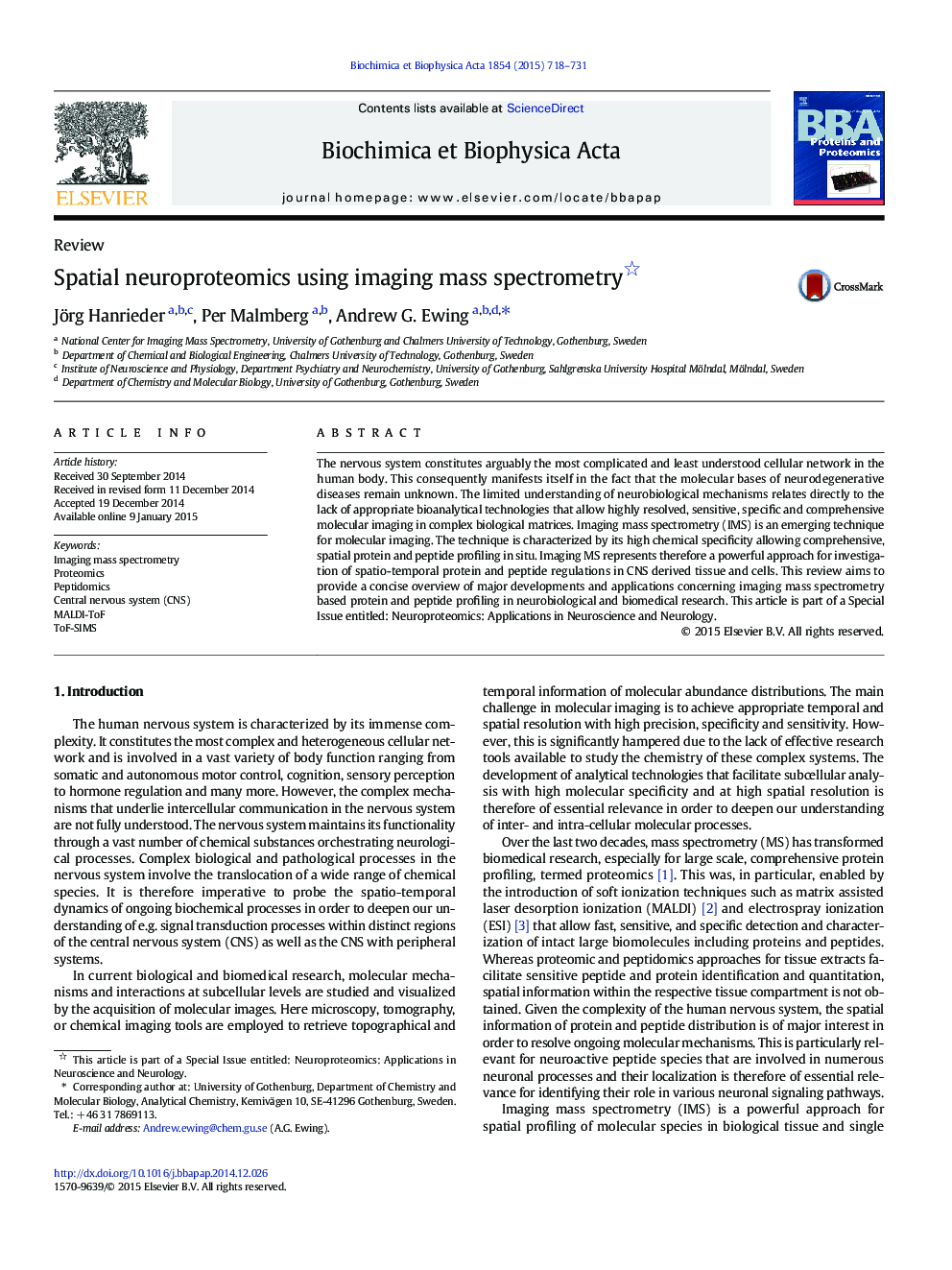| Article ID | Journal | Published Year | Pages | File Type |
|---|---|---|---|---|
| 1177817 | Biochimica et Biophysica Acta (BBA) - Proteins and Proteomics | 2015 | 14 Pages |
•Imaging MS allows for spatial protein and peptide profiling at high molecular specificity.•Recent developments push the limits in terms of spatial resolution, sensitivity and specificity.•A concise overview of IMS based approaches for protein and peptide imaging is presented.•Technical concepts and developments of IMS are discussed.•Implementations of IMS for biomedical applications in neuroscience are presented.
The nervous system constitutes arguably the most complicated and least understood cellular network in the human body. This consequently manifests itself in the fact that the molecular bases of neurodegenerative diseases remain unknown. The limited understanding of neurobiological mechanisms relates directly to the lack of appropriate bioanalytical technologies that allow highly resolved, sensitive, specific and comprehensive molecular imaging in complex biological matrices. Imaging mass spectrometry (IMS) is an emerging technique for molecular imaging. The technique is characterized by its high chemical specificity allowing comprehensive, spatial protein and peptide profiling in situ. Imaging MS represents therefore a powerful approach for investigation of spatio-temporal protein and peptide regulations in CNS derived tissue and cells. This review aims to provide a concise overview of major developments and applications concerning imaging mass spectrometry based protein and peptide profiling in neurobiological and biomedical research. This article is part of a Special Issue entitled: Neuroproteomics: Applications in Neuroscience and Neurology.
